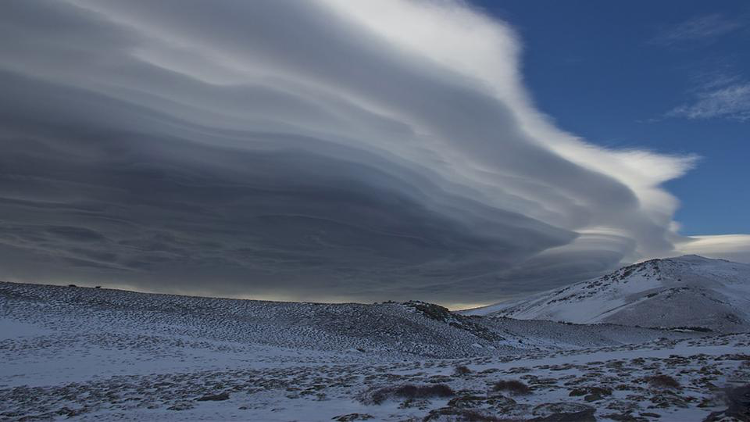The Challenge
California is becoming hotter and drier because of climate change. From 2011 to 2015, the state experienced an extreme drought characterized by unprecedented high temperatures and low precipitation. The drought resulted in record-breaking dry soils, significant agricultural damage, and rapid depletion of groundwater resources. Despite ongoing efforts to reduce greenhouse gas emissions, warming is expected to continue over the next several decades. Thus, it is now more important than ever to understand how anthropogenic warming will affect future drought conditions, like snowpack. As an important indicator of drought, the snowpack is especially relevant in California for the Sierra Nevada snowpack provides 60% of the state's water via a network of dams and reservoirs.
The Solution
In this project, researchers explored anthropogenic warming-driven changes in snowpack in the Sierra Nevada region of California. They simulated Sierra Nevada climate and snowpack during the 2011–2015 drought and compared them against identical simulations except for the temperature, which was cooled to pre-industrial levels. By comparing the “cool drought” to the “baseline drought,” the role of anthropogenic warming on snowpack levels was quantified. Then, researchers employed different emissions scenarios (e.g. mitigation, business-as-usual) to estimate the effects of anthropogenic warming on snowpack during future droughts.
Results
- Observed century-scale anthropogenic warming exacerbated Sierra Nevada snowpack loss significantly during 2011–2015. In terms of frequency, warming has at least doubled the estimated return periods of the four-year average snowpack. It will take two to four times longer with anthropogenic warming than without, for the melted snowpack to return to the simulated four-year average levels.
- Anthropogenic warming reduced four-year average annual snowpack levels by 25% across all elevations and by 10%, 26%, and 43% for the high (>2500 m), middle (1500–2500 m), and low elevations (<1500 m), respectively. Hence, snowpack at middle-to-low elevations is much more affected by recent warming trends than snowpack at the highest elevations.
- Simulating the effects of future anthropogenic warming similar to the 2011-2015 drought indicates further snowpack declines of 60–85% are expected, depending on the emissions scenario. Under the most realistic mitigation scenario, total snowpack is reduced by 60%. Under a business-as-usual scenario, total snowpack is reduced by 85%.
Additional Outcomes to Date
Huang, X., Hall, A. D., & Berg, N. (2018). Anthropogenic Warming Impacts on Today's Sierra Nevada Snowpack and Flood Risk. Geophysical Research Letters, 45(12), 6215-6222. doi:10.1029/2018GL077432
Sun, F., Berg, N., Hall, A., Schwartz, M., & Walton, D. (2019). Understanding End-of-Century Snowpack Changes Over California's Sierra Nevada. Geophysical Research Letters, 46(2), 933-943. doi:10.1029/2018gl080362
Publications and Reports
Berg, N., & Hall, A. (2017). Anthropogenic Warming Impacts on California Snowpack During Drought. Geophysical Research Letters, 44(5), 2511-2518. doi:10.1002/2016gl072104
Reich, K.D., Berg, N., Walton, D., Schwartz, M., Sun, F., Huang, X., & Hall, A. (2018). Climate Change in the Sierra Nevada: California’s Water Future. UCLA Center for Climate Science

Research Team
Neil Berg
Atmospheric & Oceanic Sciences, Physical Sciences
Institute of the Environment & Sustainability
nberg@ioes.ucla.edu
Alex Hall
Atmospheric & Oceanic Sciences, Physical Sciences
Institute of the Environment & Sustainability, Center for Climate Science
alexhall@atmos.ucla.edu




